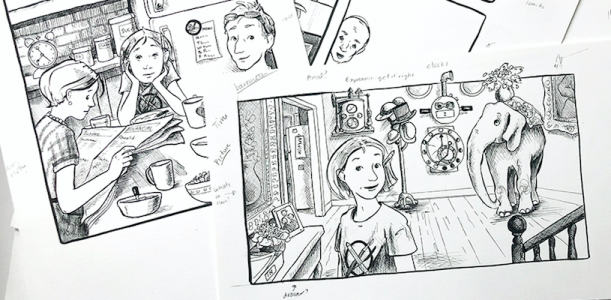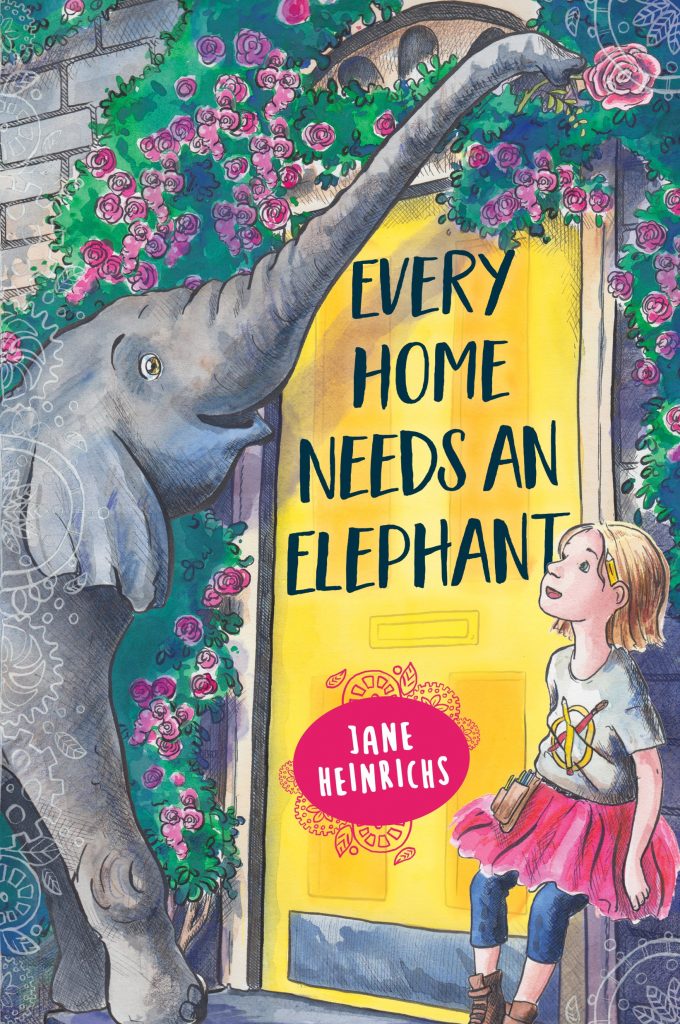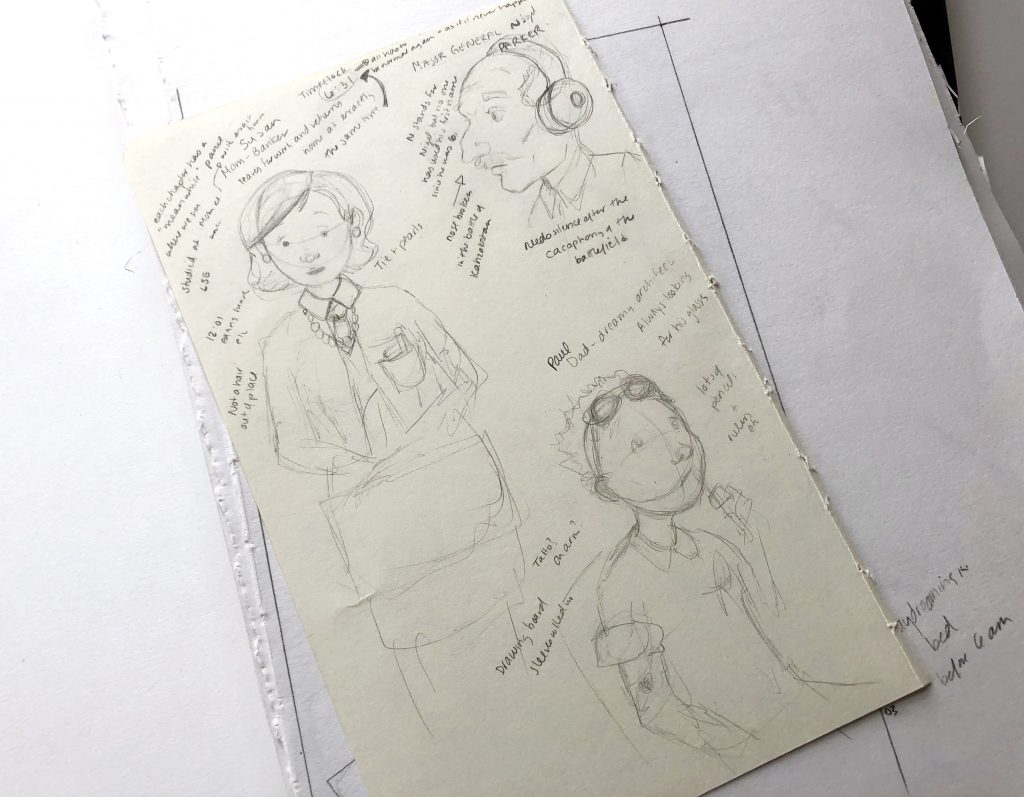One hot summer’s day nine-year-old Sarah goes to the grocery store…and comes home with an elephant. Sarah’s new elephant is not without its challenges, he has trouble fitting through doorways, knocks over everything in sight, is allergic to the neighbor’s cat and cowers at the sight of a mouse. But he also has a knack for arranging flowers and keeping Sarah company. And it’s because of the elephant that Sarah meets her new next-door neighbor and makes her first real friend. It’s because of the elephant that Sarah’s mother starts spending more time with her. In fact, despite the destruction, just about everything good that happens is because of the elephant. It turns out that every home, and every nine-year-old girl, does need an elephant. A story about friendship, adventure, and never being afraid to be yourself, this hybrid graphic novel is the perfect introduction to chapter books for all the young animal-lovers in your life.
In a guest post for the Orca Blog, author and illustrator Jane Heinrichs explains where she got the idea for Every Home Needs an Elephant and shares the different forms the story took along the way before she realized that a hybrid graphic novel—with a mix of paragraphs and comic book illustrations—was the perfect one.
* * *
A biography of a story
By Jane Heinrichs
When I first moved to London, England from Winnipeg, I loved hearing interesting stories about my new city. One story that caught my imagination was about an American president who toured the famous Harrods department store. The manager told the president that they sold everything. The president, thinking it was a joke, said, “I’d like to buy an elephant.” And the manager responded, without missing a beat, “Will that be an African or Indian elephant, sir?”
Of course, Harrods wasn’t planning to sell the president an elephant, and the president didn’t really want to buy an elephant. It was just a fun conversation.
But what if you could buy an elephant at a department store?
That idea stayed with me for a long time and gradually it grew into a story.
First I wondered: Who would buy an elephant?
And Sarah walked into my imagination. She was a little lonely and very imaginative. She desperately wanted a friend or a pet. She would definitely buy an elephant. It would be exactly the kind of crazy, impossible thing that would seem completely possible to her.
Then I wondered about the elephant.
How did he feel about being sold? What did he want for his life? Well, obviously, what he wanted most was a nice home to live in and a nice family to take care of him.
With those characters, the story grew in shape and length.
For a few years, I filled sketchbooks with drawings of Sarah and her elephant and all the adventures they might have. I scribbled words and sentences on paper, figuring out how the story could tell itself.
Stories grow slowly, like trees in the forest. (In fact, if you’re holding a paper book, it’s even made of trees, but that’s another tangent.) Just like trees, stories need water, sunshine, and compost. They need winters and springs and summers and autumns.
For a story, water, sunshine and compost are like the ideas I write and sketch in my notebook. For a story, winter is like the times when there are no ideas at all, but the story is hibernating in the back of my mind. For a story, spring and summer are like the times when ideas grow quickly, and suddenly I fill pages and pages of my notebooks. For a story, autumn is the time when I crumple up half those pages, throw them away and start again.
And I did that a few times with Every Home Needs an Elephant.
It started as a picture book, but Sarah and her elephant needed more than 32 pages to tell their story.
So I added word after word, and it grew into a long novel, far longer than it is now.
But Sarah and her elephant needed an exciting, fast-paced story. They wanted adventure, and with too many words, the adventure went too slowly.
So I crumpled up page after page.
As I threw words away, pictures came to my mind. I started imagining that they lived in a comic book world, where some of the story was told in paragraphs, and some of the story was told with comic book illustrations.
Suddenly, both Sarah and her elephant felt at home in their story.
Finally, this was their book.
And now this is your book.
It is your book to hold and to love.
I made it for you.
* * *
Jane Heinrichs is a children’s book writer and the illustrator for The World Around Us series and the Princess Angelica series with Orca. She starts her day at a clear desk with her huge sketchbook (for books) and her tiny sketchbook (for daily drawings) but usually ends up sitting on the floor, surrounded by a collection of paints, pencils and papers. Jane lives in the UK with her family.






